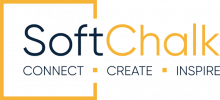Innovative teaching approaches have proven revolutionary in classrooms. When appropriately implemented, interactive and active learning strategies can dramatically enhance education by fostering engagement, encouraging group discussions, and creating time and space for professors to identify and support struggling students.
However, like all learning styles, there are specific settings where active learning methods work better than others.
The Role of Pre-Existing Knowledge
Active learning strategies are most effective when students come to class with some foundational knowledge of the topic. This allows them to engage in meaningful discussions, problem-solving, and application-based activities rather than passively absorbing information.
To that end, a critical component of classroom management involves ensuring students engage in reading, research, or other preparatory work before participating in class activities. When students have the opportunity to build on what they already know, learning becomes more effective and dynamic.
Active Learning in Practice
Active learning prioritizes engagement by encouraging students to apply what they learn during class. Rather than passively listening to lectures, students participate in discussions, hands-on projects, and collaborative exercises.
This strategy is particularly effective in online learning environments where direct engagement can be a challenge. To enhance student participation, instructors can use platforms like SoftChalk, which offer a variety of interactive activities—such as drag-and-drop exercises, image labeling, sorting tasks, and more. These tools help ensure students stay engaged and retain information more effectively.

Breaking Down Complex Topics
A structured, interactive approach allows instructors to teach complex subjects piece by piece. Students can complete assignments or preliminary work ahead of time, enabling educators to dedicate class sessions to in-depth discussions, group projects, and real-world applications.
This method also allows instructors to identify learning gaps early. If a student struggles with a particular concept, educators can provide targeted support before small misunderstandings become significant obstacles. Additionally, group discussions and collaborative exercises can help students reinforce their understanding through peer interaction.
To implement this approach effectively, educators need access to high-quality content-authoring platforms that support interactive and flexible learning.
Integrating Technology for Maximum Engagement
Technology plays a crucial role in making active learning accessible and effective. A robust digital platform like SoftChalk can:
- Enable students to engage with learning materials anytime, anywhere, using any device.
- Support diverse learning styles and provide accessibility accommodations for all students.
- Allow educators to create high-quality content and interactive lessons without requiring advanced technical skills.
- Provide access to a vast learning repository of best practices, sample lessons, and instructional resources used by educators worldwide.
By integrating the right technology, educators can create an engaging learning environment where students are more actively involved in their education.
The Importance of Educator Facilitation
Interactive learning methods are not “set it and forget it” approaches. Technology serves as a facilitator—not a replacement—for active teaching. For these strategies to be effective, educators must take an active role in guiding discussions, structuring group activities, and ensuring students engage with the material meaningfully.
High-quality content-authoring platforms like SoftChalk assist in this process by:
- Providing research-based instructional materials aligned with pedagogical best practices.
- Offering sample activities, tutorials, and ready-made resources to help educators develop engaging lessons.
With these tools, instructors can maximize classroom time, focusing on answering questions, clarifying concepts, and ensuring students gain practical understanding rather than simply delivering content.
Continuous Feedback for Improved Learning Outcomes
Active learning thrives on continuous feedback. Regular assessments and real-time feedback mechanisms allow professors to track student progress and ensure they grasp key concepts.
Platforms like SoftChalk provide built-in assessment tools, such as quizzes and interactive exercises, that allow students to gauge their understanding before moving on to new material. Instructors also gain valuable insights into student performance through data tracking and analytics, enabling them to tailor instruction based on real-time learning outcomes.
Make Interactive Learning Work for You
Creating an engaging and effective learning environment—whether in-person or online—requires the right strategies and tools. A well-designed digital learning platform can make all the difference in fostering student participation and improving educational outcomes.
SoftChalk is an award-winning solution that helps educators implement interactive and student-centered learning experiences. Whether you’re looking to enhance online learning, streamline content creation, or boost student engagement, our platform provides the tools you need to succeed.
Ready to learn more? Start your 14-day trial of SoftChalk today and discover how interactive learning can transform education.

Leave a Reply